By Shobha Rao Smilemaker
We drove on a pleasant morning to the quaint Spanish City called Carmona which has just 28000 inhabitants. Our guide pointed out a Roman acropolis cemetery which was discovered by a Britisher. There was also an interesting theatre that was built by someone who had won a lottery.
Our first stop was at the walled enclosure of the Alcázar del a Ray de Don Pertro. This Carmona fortress had gates going towards Seville or Cardoba. Exactly opposite it was the impressive St. Peters church. This was initially a mosque, the original minaret of which was converted into a church bell tower.
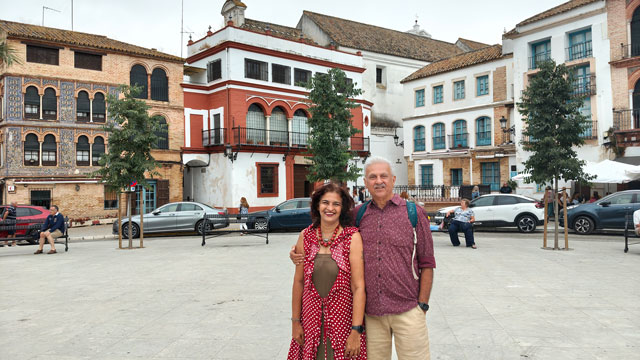
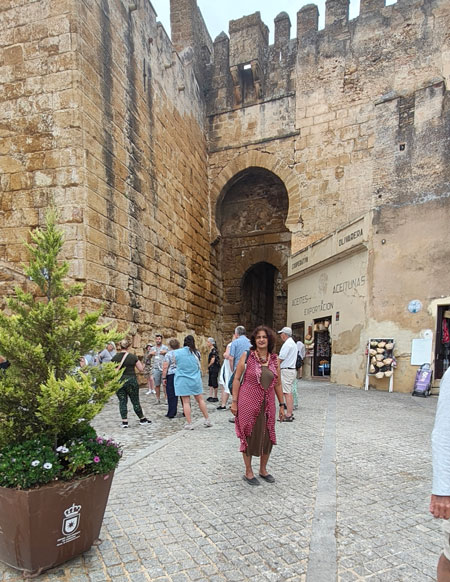
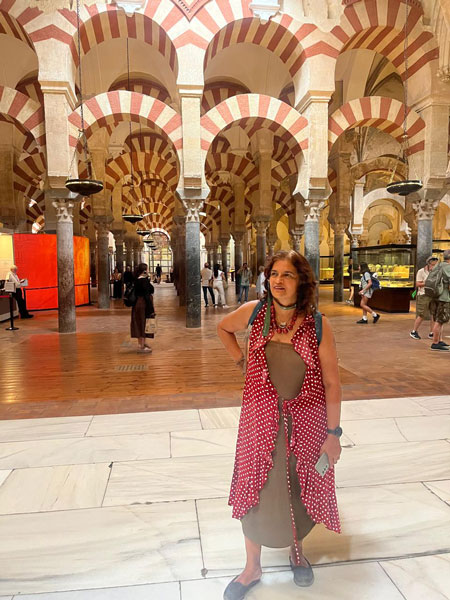
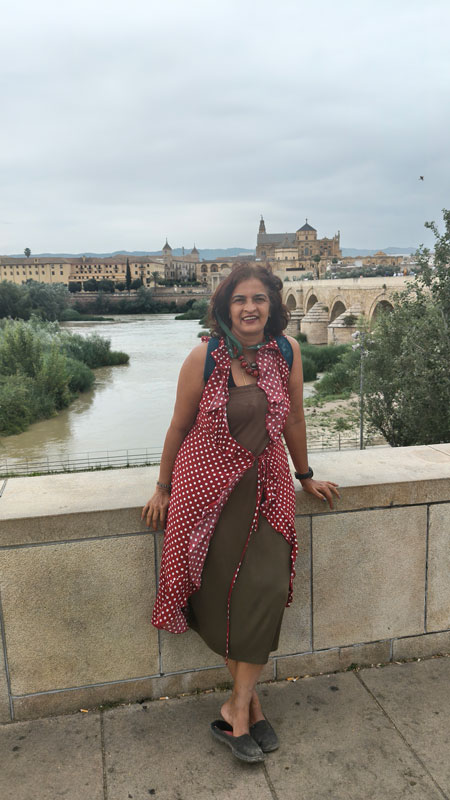
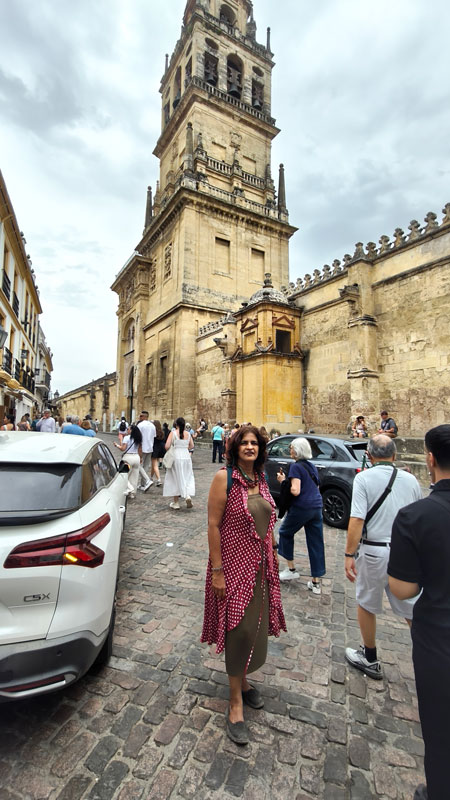

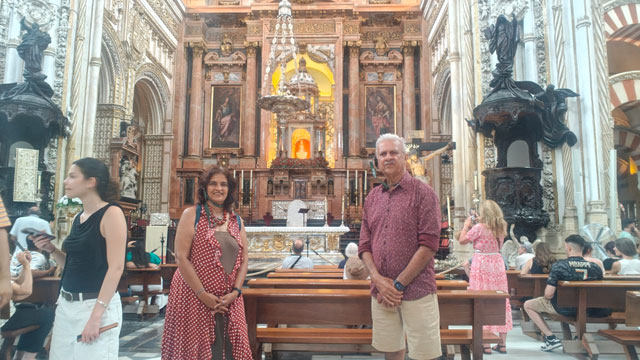
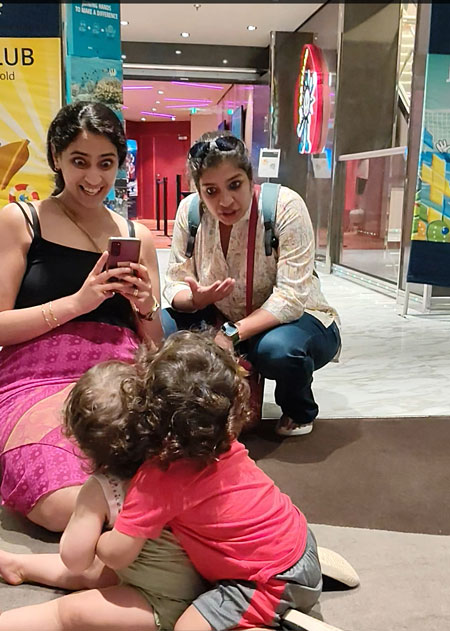
As we walked inside the Carmona fort, we were shown that upto one level of its walls had been built by Romans, then by the Muslims and then by the other meideival rulers.
Inside the fort we saw beautiful balconies in the buildings which depicted the influence of North African style of architecture.
Everything was painted in pristine white colour now, though in the ancient days white limewash was used as a protection against humidity and infections.
What was initially a convent area was later pulled down by the government and made into a white and blue market place. I loved the different houses around the square , especially the one that still depicted the Arabic influence using colorful tiles of yore We saw another church of St Mary's which had been a mosque before.
We purchased some excellent fruits at a small supermarket and my souvenir magnets too at the colourful store near the fortress entrance.
Cordoba - with its Mosque-Cathedral
Our bus stopped on one side of the Guadalquivir river and we had a panoramic view of the Spanish City of Cordoba that is famous for La Mezquita, its ancient Mosque-Cathedral.
We walked on the Augusta road bridge built over 17 stone arches by the Romans and which was used for shooting the serial called Game of Thrones. The free standing Calahorra tower was originally used as a watch tower for a clear view of boats coming down the river.
We saw the remnants of an ancient water wheel called the Albolafia that was operational to utilize the water from the river.
The grand entrance arch (the design reminded me of the French Arc de Triomphe) on the other side of the bridge was built initially by the Romans, later it was destroyed and rebuilt for the visit of Phillip II who was married to Queen Mary of Spain. She was the one who had sent protestants to the London tower to be killed inorder to re-establish Catholism. This is why the red tomato juice cocktail drink is still called 'bloody Mary'-interesting information by my enthusiastic guide.
We walked down the cobbled street of Cardoba towards the historic centre, trying to soak in the unique vibe of the horse carriages around us.
We passed by, what used to be the Royal stables with a mixed breed of Spanish and Arabian horses that looked truly majestic. These old stables now have special equestrian shows which is a mix of horses and flamenco dancers.
We entered a traditional home of Cordoba with its balcony and open aired atrium decorated with plants and flowers and which had won prizes for the prettiest patio competetion.
Our guide told us about an empty seminary, because very few Europeans want to become priests in the present times. We passed by the Entrance to the Alcazar palace which was used by Royalty.
We walked along the Christian area with noticeably broader roads and the old souq or market.
We walked past what used to be a Turkish Bath. We also walked along the Jewish quarter and saw a statue of Moses Ben Maimon outside the synagogue. I was told that the Jewish synagogue was built by the Arabs. Also the Spanish Jews were called Sephardic Jews.
Cordoba was the birthplace of 3 important philosophers - the Jewish Ben Maimon, the Roman Seneca and the Arabic Ibn Rushd.
After some souvenir shopping and lunch at Starbucks (more for the wifi) it was time to enter the main attraction the Mosque-Cathedral of Cardoba.
We entered the courtyard of oranges with an interesting anecdote behind it. Columbus was funded for his expeditions by the Spainish queen. Though his first son was born from his Portuguese wife, his second son was born from his second wife who was from Cordoba. His sailors got scurvy on the ship so orange marmalade was invented for them and oranges started to be grown in Cordoba.
The period between 8-11th century, saw the Muslim rulers build many mosques in Cordoba. In the 8th century, La Mesquita was the second biggest mosque of that era, with a capacity to accomodate 20000 people at a time! This was extended in the 11th century as the mosque towards the east side (the south side was the river) with a capacity for 40000-50000 men.This to increased to100000 capacity in the later centuries. I could image how grand it must have looked with gold covered columns.
Part of it was converted to a church in the 13-20th century by the new Christian rulers. The old Minaret became the tower of St.Raphael. The initial arches which were the entrance for the Muslim devotees was closed with a mesh and the Christians made a single new entrance door. The original side used red coloured bricks and white colored local limestone stones to join the columns, giving a double coloured look to the Arches. In the later extended section, the arches were made only with white limestone and painted partially in red to seem like mix of brick.
The panels against the walls were given to rich people as chapels so that they could be buried inside the church. We could also see many tomb stones on the floor.
The designs on some of the10th century parts of the mosque were amazing. The Muslims had used marbles of different colours- black, pink, or white for their pillars.
I also admired the colorfully redone original wooden ceiling and also the mosaic and gold decorations with mirrorwork on the panels.
Mostly men were allowed to pray inside the mosque while women had to pray outside the mosque. (In the present times the Mecca mosque is the biggest as it can hold 4 million people to pray at a time).
We finally entered the main chapel of the Christian Cathedral. This portion took 85 years to be remade. The locals did not allow the new rulers to break the old mosque. So the new chapel owners did not destroy some of the sides of the cathedral. They just removed the smaller columns and arches in the middle and built 40 huge pillars for support. They used bronze instead of gold for decorations. In the 18th century they got Mahogany wood from Cuba to make the new choir area. A 70 year old man took 9 years to build this impressive structure and then he died just before its completion.
As I sat in insignificant silence, under the mix of spiritual energy from the mosque side and cathedral side, I wondered how many unknown stories the stone walls of La Misquia could relate to the world.
I left Cordoba with a raw feeling in my heart as I watched the blissful look of an Arab lady who was travelling in our bus with her four children and inspite of her walking difficulty had come specially to see this old mosque cathedral.
Every corner of this wonderful world of ours gives me something to smile about.

Shobha Rao Smilemaker has a vision of living in a world where people use their ability to find and make smiles in any situation. She is a lawyer by qualification, a soft skills trainer by passion, a motivational speaker, a freelance journalist, a bestselling author, an avid traveler and founder of 'Smilemakers Trainings'. She can be contacted at www.shobhasmilemaker.com.